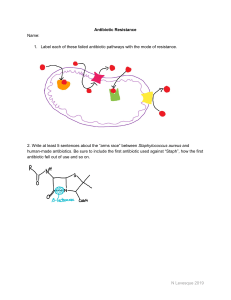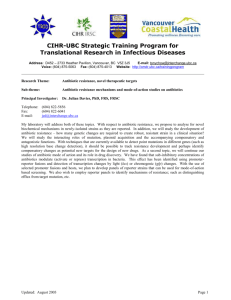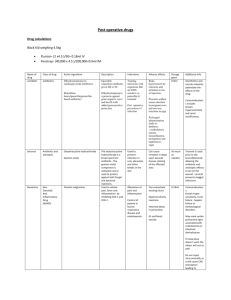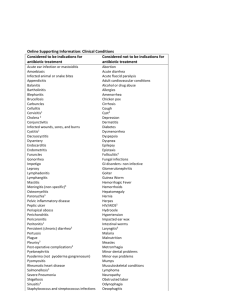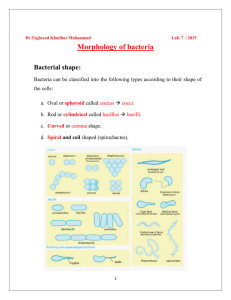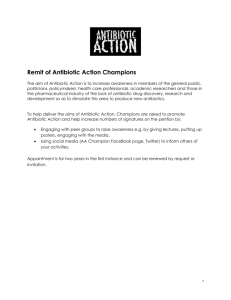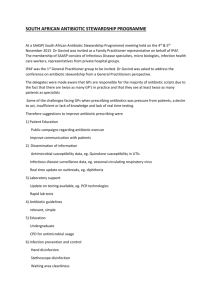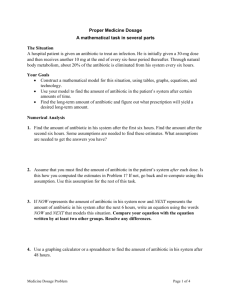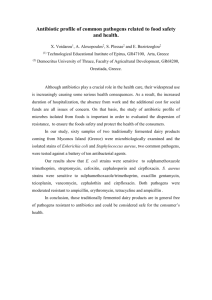burn
advertisement
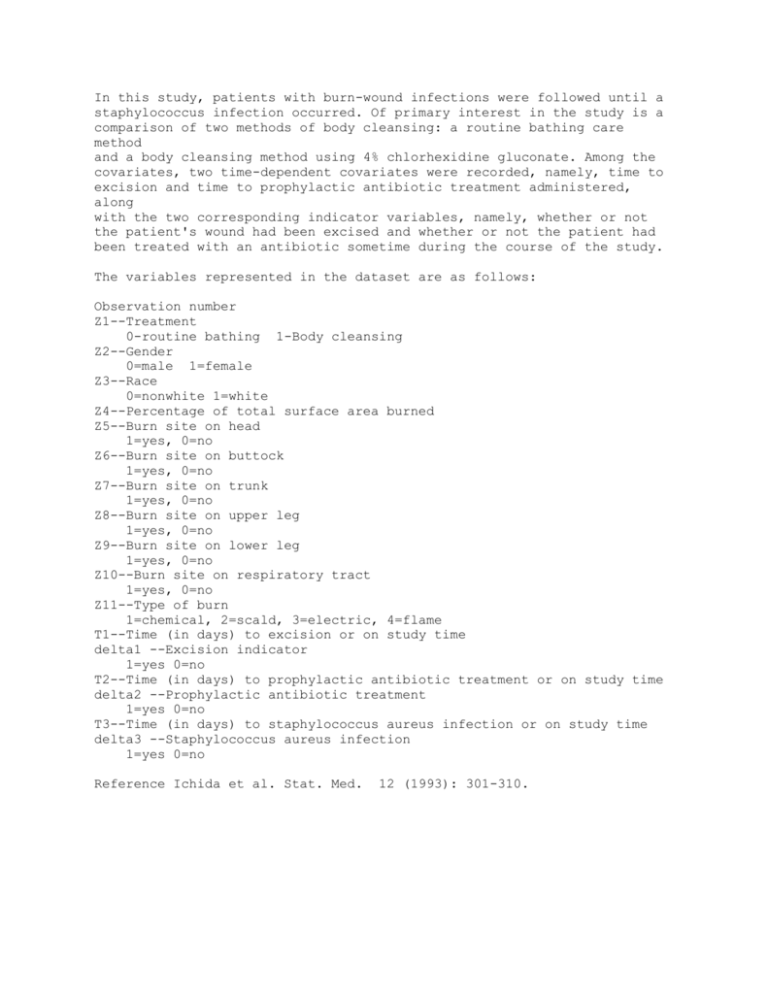
In this study, patients with burn-wound infections were followed until a staphylococcus infection occurred. Of primary interest in the study is a comparison of two methods of body cleansing: a routine bathing care method and a body cleansing method using 4% chlorhexidine gluconate. Among the covariates, two time-dependent covariates were recorded, namely, time to excision and time to prophylactic antibiotic treatment administered, along with the two corresponding indicator variables, namely, whether or not the patient's wound had been excised and whether or not the patient had been treated with an antibiotic sometime during the course of the study. The variables represented in the dataset are as follows: Observation number Z1--Treatment 0-routine bathing 1-Body cleansing Z2--Gender 0=male 1=female Z3--Race 0=nonwhite 1=white Z4--Percentage of total surface area burned Z5--Burn site on head 1=yes, 0=no Z6--Burn site on buttock 1=yes, 0=no Z7--Burn site on trunk 1=yes, 0=no Z8--Burn site on upper leg 1=yes, 0=no Z9--Burn site on lower leg 1=yes, 0=no Z10--Burn site on respiratory tract 1=yes, 0=no Z11--Type of burn 1=chemical, 2=scald, 3=electric, 4=flame T1--Time (in days) to excision or on study time delta1 --Excision indicator 1=yes 0=no T2--Time (in days) to prophylactic antibiotic treatment or on study time delta2 --Prophylactic antibiotic treatment 1=yes 0=no T3--Time (in days) to staphylococcus aureus infection or on study time delta3 --Staphylococcus aureus infection 1=yes 0=no Reference Ichida et al. Stat. Med. 12 (1993): 301-310.
